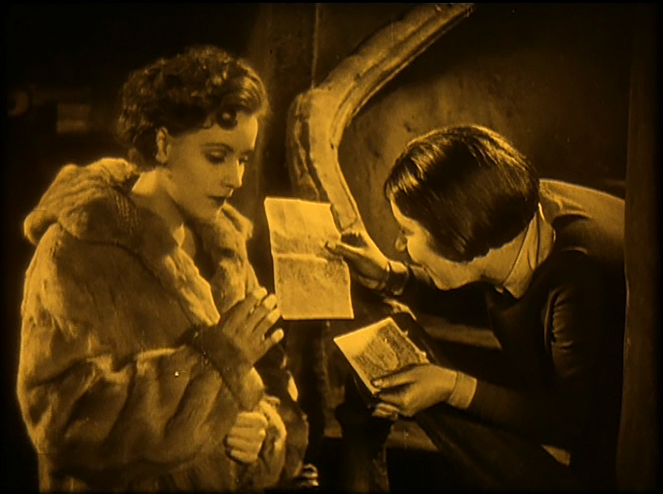Ohjaus:
Georg Wilhelm PabstKäsikirjoitus:
Willy HaasNäyttelijät:
Greta Garbo, Asta Nielsen, Werner Krauss, Gregorij Chmara, Iván Petrovich, Valeska Gert, Hertha von Walther, Sylvia Torf, Karl Etlinger, Jaro Fürth (lisää)Juonikuvaukset(1)
Pabst's first truly great film, which gave German cinema of the 1920s another important ideological impulse to steer away from Expressionism towards New Realism. The story takes place in post-war, corruption-ridden Vienna: because of devastating poverty, starvation and hopelessness, for many women suicide or prostitution are the only way out. (Summer Film School)
(lisää)Arvostelut (1)
Thanks to the fact that history likes to consider The Street of Sorrow a bridge between the Swedish and Hollywood eras of Greta Garbo, much else is also lost in this optic. Yet just as much has been added. One such story was the desire for a joint film with Garbo and Marlene Dietrich. The opaque situation with the film's distribution, endless censorship measures, and strange rumors about filmmaking practices during the turbulent 1920s were all in favor of it. For many years, only a short segment of the film was available, which is now ideally two and a half hours long. In this fragment, there is not much more left than the basic storyline with Garbo aka Greta Rumford, while virtually the entire storyline with Asta Nielsen aka Marie Lechner, and thus also with her companion played by Hertha von Walther, has disappeared. And it was the clips from the von Walther character that inspired the idea that it might actually be Marlene. Diana McLellan devoted an entire chapter to this "discovery" in her book "The Girls: Sappho Goes to Hollywood." In her defense, I must add that she was quite innocent of this; the myth surrounding the rival stars of MGM and Paramount electrified an entire decade in its day, so somehow it must have survived to this day. So what does this film actually offer? It’s an excellent Kammerspielfilm (chamber-play film) about the post-war crisis in Vienna. The divide between the hungry and destitute and those who still have money to spend has widened. Garbo plays a young girl from the meat queue who takes care of her younger sister and her father. During one hopeless night, her story intersects with that of Asta Nielsen, who sees a happy future in her relationship with her boyfriend. Her parents torment her, but when she discovers that her boyfriend doesn't take their relationship seriously, she is forced to accept an offer of support... This gives Asta the next major role of her career and she completely outdoes Garbo in terms of acting. Act 4, in particular, offers a fascinating acting creation of a despair-stricken woman. But while Garbo was yet to have a significant future, Asta was already eternal at this time. Hunger and ruin intersected the fate of the Viennese in 1921, and a minimum of four years apart was all that was needed to define this crisis. Pabst also rose to prominence as a director thanks to this success and was able to make his best films thanks to his later intensive collaboration with Henny Porten, Brigitte Helm, and Louise Brooks. Nor did he shy away from continuing to pursue anti-war themes and other specific genres. His filmography is simply a joy to study.
()

